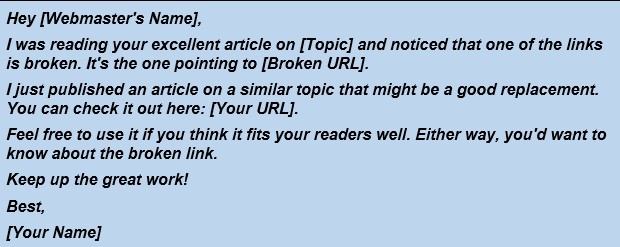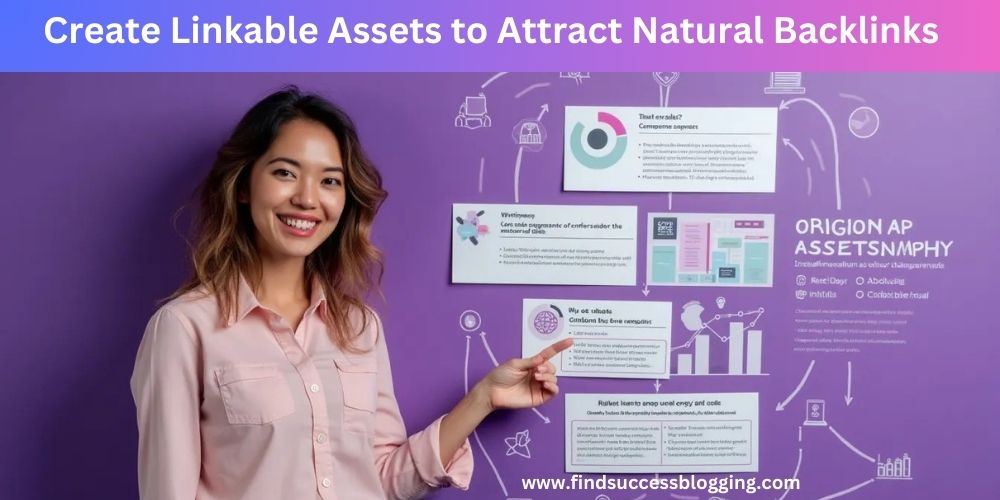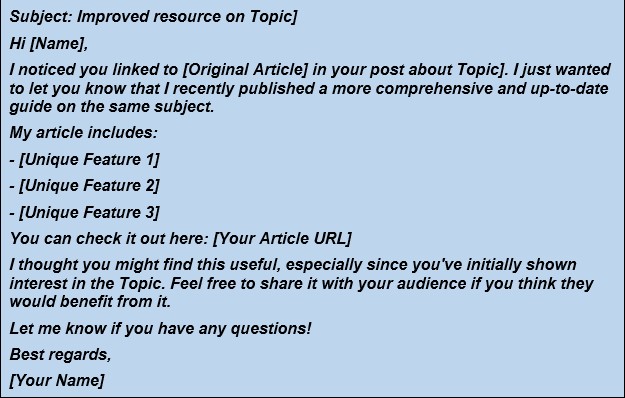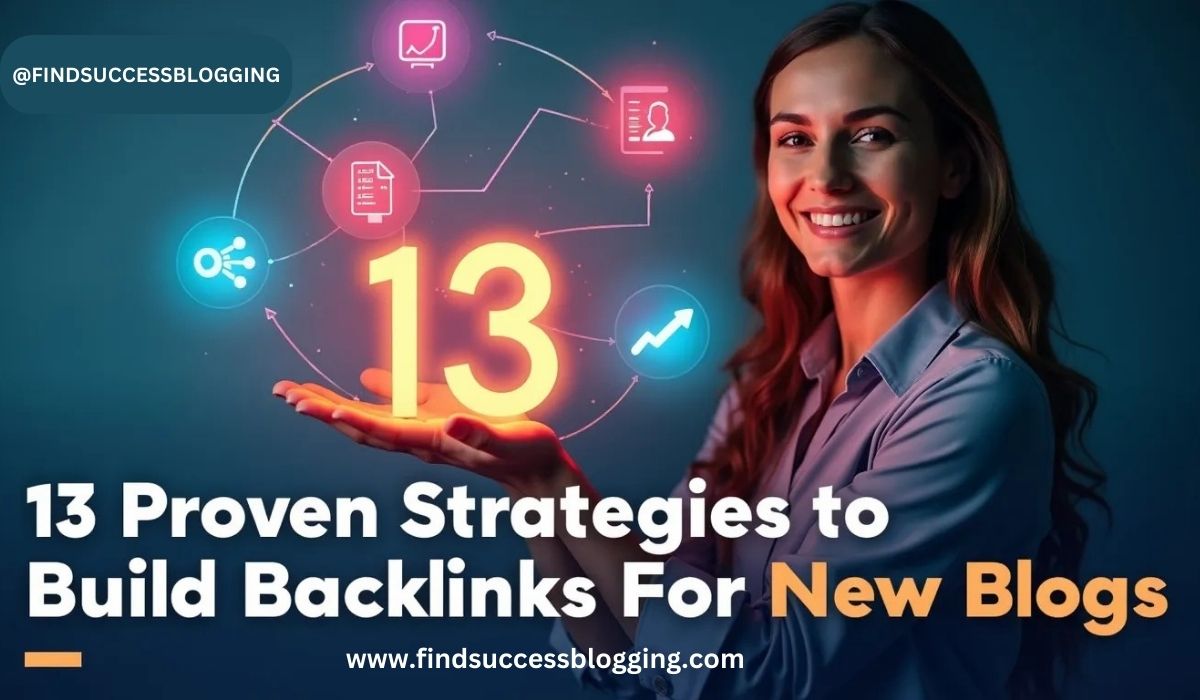Learn proven ways to build backlinks for new blogs: a comprehensive guide.
As a new blogger, have you ever felt like you’re shouting into the void, wondering if anyone’s reading your carefully crafted posts?
Trust me, I’ve been there too. But here’s the thing: if you want your blog to get massive organic traffic without focusing only on quality content and SEO, master the art of building backlinks.
Did you know backlinks are still among Google’s top three ranking factors? It’s true! But for new bloggers starting, building quality backlinks can feel like climbing Mount Everest in flip-flops. Don’t worry. I’ve got your back today!
This comprehensive guide explores 13 proven strategies to help your new blog earn those coveted backlinks and skyrocket your SEO.
So, are you ready to turn your blog into a backlink magnet? Grab your favorite beverage, get comfy, and dive into the wonderful world of ways to build backlinks for new blogs!
Read up to the end and check pro bonus tips for effective link building.
Key Takeaways
|
Table of Contents
ToggleWhat Are The Proven Ways To Build Backlinks For New Blogs?
1. Understanding the Importance of Backlinks for New Blogs
Before we jump into the nitty-gritty of how to build backlinks for new blogs, let’s take a moment to understand why they’re so important.
When I first started blogging, I thought writing high-quality content, and SEO alone would be enough to get noticed. Little did I know the surprise that awaits ahead.
Backlinks, my friends, are like the popular kids in high school—they can make or break your reputation.
In the digital world, backlinks are the votes of confidence other websites give your content. When a reputable site links to your blog, it tells search engines, “Hey, this blog is worth checking out!”
But here’s the kicker: not all backlinks are created equal. You want high-quality, relevant backlinks from authoritative sites in your niche.
It’s like getting a recommendation from the company CEO versus the human resource manager – both might be nice, but one carries a lot more weight.
Why new blogs need to prioritize backlink building
Understanding how to build backlinks for new blogs is vital because:
- It boosts your domain authority: This is a metric that search engines use to ascertain how trustworthy and authoritative your site is. The higher your domain authority, the better your chances of ranking well in search results are.
- It drives referral traffic: When someone clicks on a backlink to your site, you get direct traffic from that source. It’s like getting a personal introduction to a whole new audience!
- It helps with indexing: Search engines discover new content by following links. The more quality backlinks you have, the faster your new content gets indexed and ranked.
- It establishes your credibility: When reputable sites link to you, it’s a sign that you’re a trustworthy source of information in your niche.
What is the process involved?
You might think, “That’s all well and good, but how do I actually get these magical backlinks?” Well, that’s what we will exactly cover in this article.
We’ll explore strategies ranging from guest blogging to creating linkable assets and everything in between.
Remember, learning how to build backlinks for new blogs is a marathon, not a sprint. It takes time, effort, and a lot of patience.
But trust me, the payoff is worth it. I’ve seen blogs go from zero to hero with the right link-building strategies, and there’s no reason yours can’t do the same.
So, are you ready to roll up your sleeves and build your blog’s backlink profile? Let’s get to it!
|
Summary: Backlinks are links from one website to another. They are crucial for SEO as they act like votes of credibility and help rank pages on search engines by indicating trust and authority. Also, backlinks are essential for new blogs as they boost domain authority, drive referral traffic, help with indexing, and establish credibility. |
2. Guest Blogging: Your Secret Weapon for Backlinks

Let’s talk about one of my favorite link-building techniques: guest blogging. This strategy is like being the cool exchange student invited to all the parties – you get to mingle with new audiences and leave a lasting impression.
When I first started building backlinks for my blog, guest blogging was my go-to strategy. It’s a fantastic way to get your new blog recognized, showcase your expertise, and earn those valuable backlinks.
Discover the top 10 proven ways to promote your blog and get more readers
How to find guest blogging opportunities
First things first, you need to find the right opportunities. Look for blogs in your niche that accept guest posts.
Use search operators like “your niche + write for us” or “your niche + guest post guidelines” to find these gems. Tools like Ahrefs or SemRush can also help you find sites your competitors have guest-posted on.
Once you find your list, it’s time to craft those pitches. And let me tell you, a good pitch can make all the difference. Below is a quick template that can promise outstanding success.
Once you’ve landed that guest post opportunity, it’s time to create some killer content. Remember, this isn’t just about getting a backlink—it’s about providing value to the host blog’s audience.

Write something so good that readers can’t help but click through to your site to learn more.
Best practices for including backlinks in guest posts
When including backlinks in your guest post, less is more. Most blogs will allow you to include a link or two in the article’s body, plus one in your author bio.
Don’t stuff your post with links—that’s one way to get your post rejected.
Instead, focus on making your links contextual and relevant. Mentioning a concept you’ve written about in your blog is a perfect opportunity for a natural link. Always remember to follow the host blog’s guidelines for linking.
By the way, guest blogging isn’t just about the immediate backlink. It’s about building relationships in your niche.
So don’t just hit and run—engage with the blog’s audience in the comments, share your post on social media, and keep in touch with the blog owner.
One last tip: keep track of your guest posts. Not only is it great for your portfolio, but it also helps you monitor your backlinks.
Sometimes, site owners can remove or change them to nofollow links over time. If you notice this happening, a friendly email to the blog owner can often resolve it.
| Summary: Guest blogging is an effective strategy for building backlinks, showcasing expertise, and expanding your network. Focus on finding relevant opportunities, crafting compelling pitches, and creating high-quality content that provides value to the host blog’s audience. |
3. Harness the Potential of Broken Link Building
This strategy is one of my favorite ways to build backlinks for new blogs. This strategy is like being the hero who saves the day, and trust me; webmasters love heroes!
So, what exactly is the broken link building? Well, it’s a technique that allows you to find broken links on other websites. These sites usually display 404 errors when you try opening the pages.
Next, you create content similar to what the broken link was pointing to. Later, reach out to the webmaster to suggest replacing the broken link with a link to your new content.
It’s a win-win situation—you get a backlink, and they get to fix a broken link on their site.
Step-by-step guide to implementing broken link building
Now, I know what you’re thinking. “Alex, that sounds like a lot of work!” And you’re right. It takes some effort. But the payoff can be huge. Let me walk you through the process I use:
- Find broken links: There are several ways to do this. Use tools like Ahrefs’ Broken Link Checker or the Check My Links Chrome extension. Another method is to look for resource pages in your niche and check for broken links there.
- Analyze the broken link: Once you find the link, figure out what content it originally links to. You can use the Wayback Machine to see archived versions of the page.
- Create similar (but better) content: This is where you get to flex your content creation muscles. Create content identical to what the broken link was pointing to, but make it even better.
- Reach out to the webmaster: Now comes the outreach part.
Below is a template I’ve used successfully to build backlinks for new blogs.

Broken link building is not just about getting that one link. It’s about building relationships. Whenever you help a webmaster improve their site, you open the door for future collaborations.
Tips for effective broken link-building efforts
- Focus on relevant, high-quality sites. A few backlinks from authoritative sites in your niche are worth more than dozens of low-quality sites.
- Personalize your outreach emails. Show that you’ve actually read their content and aren’t just sending mass emails.
- Don’t just stop at one link. If you find multiple broken links on a site, mention them in your email. The webmaster will appreciate your thoroughness.
- Be patient. Not everyone will respond immediately. Sometimes, it takes a gentle follow-up to get results.
- Keep track of your efforts. Use a spreadsheet to monitor which sites you’ve contacted, when, and the results.
Remember, broken link building is as much about providing value as it is about building backlinks. Always create genuinely useful content for the site’s audience.
| Summary: Broken link building is a powerful technique for finding broken links(404 error pages) on other websites. Next, create similar content and suggest your link as a replacement. It’s an effective way to build backlinks for new blogs while providing value to other site owners. |
4. Create Linkable Assets: Comprehensive Guides and Resources

Let’s talk about creating content so good people can’t help but link to it. I’m talking about linkable assets—those comprehensive guides and resources that become the go-to references in your niche.
You may wonder, “What exactly is a linkable asset?” Well, it’s any valuable, informative, or unique content that other sites naturally want to link to. Think ultimate guides, in-depth tutorials, original research, free tools, and calculators.
Creating linkable assets is among the best ways to build backlinks for new blogs that work for years if implemented correctly.
Tips for creating in-depth, valuable resources
So, how do you create these link magnets? Here’s my process.
- Choose your Topic wisely: Look for topics with a lot of search volume but lack comprehensive resources. Tools like SemRush or Ahrefs can help you identify these opportunities.
- Go deep: Don’t just scratch the surface. You aim to create the most comprehensive and in-depth resource on the Topic.
- Make it visually appealing: Use images, infographics, and videos to break up the text and engage readers with your content.
- Keep it updated: Regularly update your linkable assets to ensure they remain relevant and valuable.
- Promote, promote, promote: Creating the asset is only half the battle. It would help if you got it in front of the right people.
Examples of linkable assets
Below are some types of linkable assets that have worked well for me:
- Ultimate guides: These comprehensive resources cover everything someone needs to know about a topic. For example, “The Ultimate Guide to SEO Strategy for Beginners.”
- Free tools and calculators: Create free calculators or research tools that people can interact with if you have the development skills. Alternatively, buy relevant tools from the Code Canyon website if you have a budget.
These tools usually come with guides or tutorials on installing them on your website. I promise you that the tools from Code Canyon are an excellent way to build backlinks for new blogs.
- Original research: Conduct surveys or analyze data to provide unique insights. People love linking to original data.
- Expert roundups: Gather insights from industry experts on a specific topic. This strategy provides value to your readers, and the experts are likely to share and link to the post.
- Resource lists: Curate the best resources on a specific topic. For instance, “50 Must-Have Tools for Digital Marketers” can become a go-to reference in your industry.
Now, let me share a little secret with you. Creating linkable assets isn’t just about building backlinks—it’s about establishing authority in your niche.
Besides, you become the go-to expert in your field when you consistently produce high-quality, comprehensive content. This process naturally attracts more links, more traffic, and more opportunities.
Promoting your linkable assets to the right audience
Consider the different stages of the buyer’s journey when creating linkable assets. Create content that caters to people at the awareness, consideration, and decision stages.
This way, you’re not just attracting links—you’re also nurturing potential customers.
For example, if you’re in the fitness niche, you might create:
- Awareness stage: “The Ultimate Guide to Getting Fit: Everything You Need to Know”
- Consideration stage: “10 Best Home Workout Programs Compared”
- Decision stage: “How to Choose the Right Personal Trainer for Your Fitness Goals”
Each could be a comprehensive, linkable asset that serves a different purpose in your content strategy.
Remember, creating linkable assets is an investment. It takes time and effort, but the payoff can be huge.
Not only do you get valuable backlinks, but you also position yourself as an authority in your niche. Eventually, you will get other opportunities like speaking engagements, collaborations, and even media mentions.
| Summary: Creating linkable assets like comprehensive guides, original research, and interactive tools is a powerful way to attract high-quality backlinks naturally. These assets build your link profile and establish your authority in your niche. |
5. Engage in Strategic Outreach and Relationship Building
Let’s talk about something new bloggers often overlook in link building—strategic outreach and relationship building.
When I first started blogging, I thought it was all about the content. But I quickly learned that in the digital world, just like in the real world. It’s often about who you know.
Learn how to start a blog and find success blogging
Strategic outreach is like being the new kid in school who proposes to make friends instead of sitting alone in the cafeteria.
It’s about reaching out to other bloggers, influencers, and brands in your niche to build genuine relationships. These relationships are essential ways to build backlinks for new blogs.
Techniques for building genuine relationships with influencers
Here’s my approach to strategic outreach.
- Identify your targets: Look for bloggers, influencers, and brands in your niche. Tools like BuzzSumo can help you find influential people in your industry.
- Engage with their content: Before reaching out, engage them first. Comment on their blog posts, share their content on social media, and participate in their discussions.
- Personalize your outreach: When performing an outreach, make it personal. Reference their work, share how it has helped you, and be genuine in your approach.
- Offer value: Think about how you can help them. Can you provide a testimonial? Or share their content with your audience? Or offer a guest post on uncovered topics?
- Build the relationship before asking for anything: Don’t ask for a link immediately. Build a relationship first.
Let me share a personal story. A few years ago, I came across a blogger in my niche who was doing amazing work. Instead of immediately asking for a link, I spent weeks engaging with their content, sharing their posts, and providing thoughtful comments.
When I finally reached out via email, I didn’t ask for anything. I simply expressed my admiration for their work and shared how it had impacted my blogging journey.
Do you know what happened? We ended up having a great conversation, which led to a collaboration on a joint webinar.
Not only did I get a backlink from their high-authority site, but I also gained a valuable industry connection and friend.
Practical tips for effective outreach
- Use social media wisely: Platforms like Twitter and LinkedIn are great for initial connections. Engage with influencers’ posts, share their content, and gradually build a rapport.
- Attend industry events: Whether virtual or in-person, events are fantastic opportunities to network and build relationships.
- Create a value-first mindset: Always think about how you can help others before asking for anything in return.
- Be patient: Building genuine relationships takes time. Don’t expect immediate results.
- Follow up, but don’t be pushy: If you don’t get a response, a polite follow-up is fine. But know when to back off.
Remember, the goal of strategic outreach isn’t just to get backlinks. It’s about building a network in your industry. These relationships lead to guest posting opportunities, collaborations, mentions in roundup posts, and even business partnerships.
Lastly, don’t forget about link reclamation. Use tools like Mention or Google Alerts to monitor when your brand is mentioned online. If you find a mention without a link, politely ask if they’d be willing to add one.
| Summary: Strategic outreach and relationship building are effective ways to build backlinks for new blogs. Focus on providing value, creating genuine connections, and nurturing relationships over time. These efforts can lead to high-quality backlinks, collaborations, and valuable industry connections. |
6. Use HARO to Build Backlinks for New Blogs
HARO (Help a Reporter Out) is one of my favorite link-building techniques that often flies under the radar.
This platform is like a matchmaking service for journalists and sources. It’s a goldmine platform to build backlinks for new blogs from high-domain websites.
When I first discovered HARO, I was skeptical. I mean, could it really be that easy to get mentioned in major publications?
However, once I got the hang of it, HARO became one of my most reliable quality backlinks sources.
So, how does HARO work? Journalists submit queries when they need expert sources for their articles.
As an expert in your field, you can respond to these queries. If the journalist uses your response, you often get a mention and a backlink from their publication.
Tips for crafting compelling HARO responses
Now, here’s my process for making the most of HARO.
- Sign up for HARO: It’s free, and you’ll receive three emails daily with journalists’ queries.
- Choose your categories wisely: Don’t answer everything. Focus on your niche or the areas where you truly have expertise.
- Respond quickly: Journalists often work on tight deadlines. The sooner you respond, the better your chances.
- Provide value: Don’t just promote yourself. Give thoughtful, informative answers that the journalist can use.
- Keep it concise: Journalists are busy. Get to the point quickly and provide clear, quotable statements.
- Include your credentials: Briefly explain why you’re qualified to answer this query.
- Follow-up: If you don’t hear back, a polite follow-up after a week is okay.
Maximizing your chances of getting featured for backlinks
Here are some pro tips for HARO success.
- Set up email filters to organize HARO emails. This will help you quickly identify relevant queries.
- Create templates for your bio and credentials. Doing so saves time when responding to multiple queries.
- Use a tool like HARO Hunter to get alerts for specific keywords in queries.
- Don’t get discouraged if you don’t hear back. It’s normal to have a low response rate, especially when starting.
- Build relationships with journalists. If they use your quote once and like it, they might return for future articles.
One thing to remember: HARO isn’t just about building backlinks. It’s also a great way to establish yourself as a niche expert.
Even if a particular response doesn’t result in a backlink, it might lead to other opportunities like speaking engagements or collaborations.
I remember responding to a HARO query about SEO strategies for small businesses once. The journalist didn’t only use my quote. Still, they were impressed enough to reach out for a full interview for a different article.
That led to a fantastic backlink from a high-authority site and a great relationship with the journalist.
Now, let’s talk about crafting the perfect HARO pitch. Here’s a template I’ve used successfully.

Remember, the key to HARO’s success is consistency. Make it a habit to check your HARO emails daily and respond to relevant queries. Over time, you’ll build a portfolio of high-quality backlinks and media mentions.
| Summary: HARO (Help a Reporter Out) is a powerful tool for earning high-quality backlinks from reputable publications. Success with HARO requires quick responses, valuable insights, and consistent effort. It’s not just about link-building, but also about establishing yourself as an industry expert. |
7. Implement the Skyscraper Technique for Content Creation

The Skyscraper Technique is another fantastic way to build backlinks for new blogs. This method, popularized by Brian Dean of Backlinko, is like taking an already successful piece of content and building it higher, better, and more impressive.
The basic idea is simple. First, find content that is performing well. Next, create something even better, and then reach out to the people linking to the original content, letting them know about your improved version.
It’s like showing up to a party with a better bottle of wine than the host – people can’t help but take notice!
How to find popular content to improve upon
Here’s how I implement the Skyscraper Technique.
- Find popular content in your niche: Use tools like Ahrefs or BuzzSumo to identify content that is already getting many backlinks and social shares.
- Analyze what makes it successful: Is it the depth of information? The visual elements? The unique perspective?
- Create something even better: This could mean making it more comprehensive, up-to-date, better designed, or adding unique insights.
- Promote your content: Reach out to the people who linked to the original piece and tell them about your improved version.
The top 13 blogging for business success secrets revealed
Let me share a personal success story with the Skyscraper Technique. A few years ago, I noticed a popular article about blogging tips that was getting a lot of traction. It was good, but I saw room for improvement.
So, I created my version, adding more actionable tips, case studies, and even a downloadable checklist.
Then came the outreach part. I emailed everyone who had linked to the original article, explaining how my piece expanded on the Topic and offered more value.
The response was incredible! I earned dozens of high-quality backlinks, and the post also went viral on social media, driving huge traffic to my blog.
Strategies for promoting your skyscraper content
Below are some tips to make the Skyscraper Technique work for you.
- Choose your Topic wisely: Look for topics with evergreen appeal that people are always searching for.
- Go above and beyond: Don’t just make minor improvements. Your content should be significantly better than the original.
- Make it visually appealing: Use high-quality images, infographics, and videos to make your content stand out.
- Add unique data or insights: Include original research or data unavailable elsewhere.
- Craft a compelling outreach email: Personalize your emails and clearly explain why your content is worth linking to.
Remember, the Skyscraper Technique isn’t just about learning to build backlinks for new blogs. It is about creating the best possible content for your audience. When you focus on providing exceptional value, the links often follow naturally.
I’ve learned that the Skyscraper Technique works best when combined with other link-building strategies.
For example, you can use your content as a guest post on high-authority sites or share it in relevant online communities to generate buzz.
Here’s a template I use for outreach emails when implementing the Skyscraper Technique.

Now, let me be honest—the Skyscraper Technique requires lots of effort. But in my experience, the results are worth it.
Not only do you end up with content that attracts backlinks, but you also position yourself as an authority in your niche.
One last tip: keep your skyscraper content updated. Remember to refresh your content as new information becomes available or industry trends change. This practice allows you to reach out to people and potentially earn more links.
| Summary: The Skyscraper Technique involves creating superior content based on already successful pieces and promoting it to earn backlinks. This strategy requires significant effort but results in high-quality backlinks, increased traffic, and enhanced authority in your niche. |
8. Leverage the Power of Infographics and Visual Content
Infographics are like the Swiss Army knives of content marketing. They’re visually appealing, easy to digest, and, most importantly, potential link magnets.
People love sharing infographics, and that means an excellent opportunity to build backlinks for blogs.
The good news about infographics and visual content is you don’t need to be a designer. There are tons of tools out there that make creating infographics a breeze.
Canva and Piktochart are some of my favorites. They have templates that you can customize to fit your needs.
But here’s the unique advantage: it’s not just about making a pretty picture. The content of your infographic needs to be top-notch to build backlinks for new blogs.
How to create sharable Infographics and visual content
Below are ways to create infographics that people can’t help but share.
- Choose a topic relevant to your niche and has broad appeal.
- Research thoroughly. Gather interesting statistics, facts, and data points. People love sharing infographics that teach them something new.
- Organize your information in a logical flow. Think about how you can tell a story with your data.
- Keep it simple. Don’t cram too much information into one infographic. Remember, the goal is to make complex information easy to understand at a glance.
- Use eye-catching colors and fonts, but keep it consistent with your brand.
Sharing Infographics and visuals
Once you’ve created your masterpiece, it’s time to promote it. This is where the real link-building magic happens. Below are some strategies to use.
- Share it on social media platforms. Pinterest is especially great for infographics.
- Reach out to bloggers and influencers in your niche. Let them know you’ve created this outstanding infographic and offer it to them to use on their site (with a link back to you, of course).
- Submit your infographic to infographic directories. Sites like Visual.ly and Infographic Journal are great places to start.
- Write a blog post to accompany your infographic. This action gives you more content to rank for and provides a context for your visual content.
- Use your infographic in guest posts. Many blogs love it when guest posters bring their visuals.
Learn the top 10 tips for successful affiliate marketing for new bloggers
Remember, the key to infographic success is creating something that provides value. Therefore, consider what information your audience would find useful or interesting.
And here’s a pro tip: make it easy for people to share your infographic. Include an embed code with the infographic at the bottom of your blog post.
As a result, when other bloggers want to use your infographic, they can easily copy and paste the code, including a backlink to your site.
| Summary: Infographics are powerful tools for building backlinks and increasing visibility. Focus on creating visually appealing, informative infographics and promote them strategically to maximize their link-earning potential. |
9. Leverage Social Media for Backlink Opportunities

Let’s dive into a topic close to my heart—using social media to build backlinks for new blogs.
I know what you’re thinking: “Alex, social media links are usually nofollow. How can they help with link building?”
Well, my friend, social media is more than just a direct source of backlinks—it’s a powerful tool for creating opportunities that lead to high-quality, dofollow links.
When I started blogging, I underestimated the power of social media in my SEO strategy. But over time, I’ve learned that a strong social media presence is an excellent way to build backlinks for blogs and drive organic traffic.
Discover the top 13 social media platforms to skyrocket your blog traffic
Using social media to build relationships and earn backlinks
Here’s how I leverage social media for backlink opportunities.
- Share your content strategically: Don’t just blast your links everywhere. Share your best content at optimal times, using relevant hashtags to increase visibility.
- Engage with influencers and brands: Comment on their posts, share their content, and build relationships. This action can lead to collaborations and backlink opportunities down the line.
- Participate in Twitter chats and Facebook groups: These are great places to showcase your expertise and connect with others in your niche.
- Use visual platforms like Instagram and Pinterest: Create eye-catching graphics linking to your blog posts.
While these links are typically nofollow, they can drive traffic and lead to dofollow links if your content resonates with the right people.
- Leverage LinkedIn for B2B opportunities: Share your content, write articles, and connect with industry professionals. LinkedIn can be a goldmine for high-quality backlinks, especially in professional niches.
A few years ago, I created an infographic about content marketing trends for a client. I shared it on Pinterest, and it quickly gained traction.
A popular industry blog saw the infographic, contacted me, and asked if they could feature it on their site with a backlink to my blog.
Later, that single Pinterest share led to a high-quality backlink from an authoritative site, not to mention a significant boost in traffic.
Strategies for creating shareable content on social platforms
Here are some pro tips for leveraging social media for link building.
- Create shareable content: Focus on creating natural content that people want to share. Infographics, original research, and comprehensive guides work well.
- Use social listening tools: Monitor mentions of your brand or relevant keywords. This can help you identify link opportunities and engage in relevant conversations.
- Run social media contests: Encourage users to create content related to your brand or industry. This user-generated content can lead to natural backlinks.
- Collaborate with influencers: Partner with influencers in your niche for content creation or social media takeovers. These collaborations often result in backlinks from the influencer’s blog or website.
- Use social bookmarking sites: Platforms like Reddit, StumbleUpon, or Flipboard can drive traffic and potentially lead to backlinks if your content gets noticed by the right people.
Engaging with influencers and brands for potential backlinks
Remember, the key is to be genuine in your interactions. Social media is about building relationships, not just promoting your content.
I learned this lesson the hard way when I first started blogging. I used to drop links to my blog posts without engaging with others, and guess what? Crickets. There is no engagement, no shares, and no backlinks.
But things dramatically changed when I focused on providing value and building genuine connections. I remember joining a Facebook group for bloggers and consistently sharing helpful advice (without constantly promoting my content).
Over time, I became known as a go-to resource in the group. This led to many opportunities—guest post invitations, collaboration requests, and, yes, plenty of natural backlinks.
Last, don’t underestimate the power of social proof in building backlinks. When your content gets a lot of shares and engagement on social media, it signals to others that it is valuable. This social proof can make website owners more likely to link to your content.
|
Summary: While social media links are typically nofollow, a strong presence can create many opportunities for earning high-quality backlinks. Focus on sharing valuable content, building genuine relationships, and leveraging each platform’s unique features to maximize ways to build backlinks for new blogs. |
10. Participate in Industry Forums and Online Communities
Participating in industry forums and online communities is often overlooked. Still, it is an incredible way to build backlinks for new blogs.
However, when you approach this strategy correctly, it can build authority, drive traffic, and earn quality backlinks.
As a new blogger, I hesitated to dive into forums and online communities. I was worried about coming across as self-promotional or spammy.
But, once I figured out the right approach, these platforms became invaluable for building backlinks and establishing myself as an expert in my niche.
Finding relevant forums and communities in your niche
Here’s my approach to leveraging forums and online communities.
- Find the right platforms: Look for forums and communities that are active and relevant to your niche. For instance, Reddit, Quora, industry-specific forums, and Facebook groups can be goldmines.
- Lurk before you leap: Spend some time observing the community. Understand the rules, the culture, and the type of content that’s well-received.
- Provide value first: Don’t jump in with links to your blog. Start by answering questions and providing helpful information without expecting anything in return.
- Establish your expertise: Share your knowledge consistently. Over time, people will recognize you as an authority.
- Use your signature wisely: Many forums allow you to include a link in your signature. So, it is a great place for a subtle backlink to your blog.
- Share your content when it’s truly relevant: If you’ve written a blog post that directly answers someone’s question, it’s okay to share it. However, always provide a summary in your response, too.
Pro tips to achieve from most forums and online communities
- Be consistent: Regular participation is key to building trust and recognition.
- Stay up-to-date: Share recent industry news and insights to position yourself as a thought leader.
- Use storytelling: People connect with personal experiences. Share your successes and failures to make your advice more relatable.
- Create valuable resources: If you notice the same questions repeatedly, create a comprehensive resource on your blog and share it when relevant.
- Engage in discussions: Don’t just answer questions—ask thoughtful queries while engaging in meaningful conversations.
Best practices for contributing value and earning backlinks
The goal isn’t just to drop links—it’s to become a valued community member. When you focus on providing genuine value, the backlinks usually come naturally.
One effective tactic is to use forums for content ideas. Also, focus on the questions people ask and the problems they face.
These can be goldmines for blog post topics. When you create content that directly addresses the needs of your community, it’s much more likely to build backlinks for new blogs, including shares.
Check ten reasons readers give up on your website & how to prevent them
Lastly, don’t underestimate the power of personal branding in forums and online communities.
Use a consistent username across platforms, have a professional profile picture, and craft a compelling bio. People who see you as a real person with genuine expertise will probably check your blog and potentially link to your content.
|
Summary: Participating in industry forums and online communities can be a powerful link-building strategy if done correctly. Focus on providing value, establishing expertise, and building genuine relationships. This approach can lead to high-quality backlinks, increased traffic, and enhanced authority in your niche. |
11. Leverage Local SEO Strategies for Backlinks
Another disregarded way to build backlinks for new blogs is local SEO.
When I started exploring local SEO for link building, I was skeptical. After all, my blog was about digital marketing—not exactly a local business, right?
However, as I explored deeper, I discovered many opportunities that helped me build quality backlinks. Also, I expanded my local network and opened up new business opportunities.
How to leverage local SEO to build backlinks for new blogs
- Create location-specific content: Even if your blog isn’t location-dependent, you can create content relevant to specific areas. For example, “Top Digital Marketing Agencies in [City Name]” or “How [City Name] Businesses Are Using Social Media.”
- Get listed in local directories: Many local directories offer free listings. While these links are often nofollow, they can drive traffic and lead to other linking opportunities.
- Participate in local events: Attend or speak at local business events, meetups, or conferences. These often lead to mention on event websites or local news outlets.
- Collaborate with local businesses: Partner with local companies for content creation or promotions. This action results in backlinks from their websites.
- Sponsor local events or charities: This often leads to backlinks from event websites and regional news coverage.
- Join local business associations: Many associations have member directories or feature members on their websites, providing valuable backlinks.
Discover 11 effective blogging tips for beginners to run a successful blog
Pro tips for leveraging local SEO for link-building
- Optimize your Google My Business listing: Even if you don’t have a physical location, you can create a listing for your brand. It can improve your local search visibility.
- Create location-specific landing pages: If you serve multiple areas, create dedicated pages for each location. This process gives you more opportunities to earn location-specific backlinks.
- Engage with local influencers: Collaborate with local bloggers, journalists, or social media influencers. They often have a strong local following and can provide valuable backlinks.
- Use local hashtags on social media: This can increase your visibility to businesses and organizations who might link to your content.
- Offer local-specific resources: Create guides, tools, or resources specifically for your area. For example, a “Local Business Digital Marketing Checklist” could be link-worthy.
Remember, the key to success with local SEO link building is to provide value to your local community. It’s not just about knowing ways to build backlinks for new blogs. It’s about building relationships and establishing yourself as a local authority in your niche.
Additional business directories to consider
Never underestimate the power of the local press. Build relationships with local journalists and bloggers. Offer yourself an expert source for quotes on topics related to your niche.
This opportunity can lead to valuable backlinks from local news websites, which often have high domain authority.
|
Summary: Leveraging local SEO strategies can be a powerful way to build high-quality backlinks, even for blogs that aren’t location-specific. Create location-relevant content, engaging with the local business community and providing value to your local area. This approach can lead to valuable backlinks, increased local visibility, and new business opportunities. |
12. Leverage Podcasts and Webinars for Backlink Opportunities

Leveraging podcasts and webinars to build backlinks for new blogs is a strategy that’s gaining traction in digital marketing.
Podcasts and webinars can be goldmines for building backlinks, even if you’re not hosting them yourself.
They provide fantastic backlink opportunities and audience engagement.
Check this post and learn how to make money doing a podcast
How to utilize podcasts and webinars for link-building
- Be a guest on podcasts: Reach out to podcasts in your niche and offer to be a guest. Most podcast hosts will include a link to your website in their show notes.
- Host your webinars: Create valuable, educational webinars related to your niche. Promote these through your blog and social media channels.
- Participate in other people’s webinars: Offer insightful comments or questions. Many hosts will acknowledge active participants, sometimes with a link to their site.
- Create content around podcast or webinar appearances: Write blog posts summarizing key points from podcasts you’ve been on or webinars you’ve attended. It creates additional content for your site and often leads to reciprocal links from the hosts.
- Collaborate with other experts: Co-host webinars or podcast episodes with other experts in your field. This action can lead to backlinks from their websites and expanded audience reach.
Pro tips for leveraging podcasts and webinars
- Prepare thoroughly: Whether you’re a podcast guest or webinar host, come prepared with valuable insights and actionable tips. The better your content, the more likely people will link to it.
- Create a dedicated landing page: When you’re a podcast guest, create a special landing page on your site with resources mentioned in the episode. As a result, the host will have a specific page to link to and provide value to listeners.
- Repurpose content: Turn your podcast appearances or webinars into blog posts, infographics, or YouTube videos. This technique extends the lifespan of your content and multiplies the opportunities to build backlinks for new blogs.
- Engage with the audience: Provide thoughtful, valuable responses during live webinars or podcast Q&Sessions. You will receive further engagement and potential backlink opportunities.
- Follow up: After a podcast or webinar appearance, follow up with the host and any engaged audience members. Building these relationships can lead to more link-building opportunities down the line.
Remember, the key to success with this strategy is providing value. Don’t just focus on promoting yourself—instead, share insights that will genuinely help the audience.
Also, don’t underestimate the power of relationships in this strategy. Building genuine connections with podcast hosts and webinar organizers can lead to repeat appearances and ongoing link-building opportunities.
|
Summary: Leveraging podcasts and webinars can be a powerful strategy for building high-quality backlinks. Ensure you provide value as a guest or host, repurpose your content, and build relationships in your industry. This approach can lead to diverse backlink opportunities, increased visibility, and the chance to establish yourself as an expert in your niche. |
13. Additional Pro Bonus Tips to Build Backlinks for New Blogs
Focus on Quality Over Quantity: Remember, having a few high-quality backlinks from authoritative sites is better than having many low-quality links from spammy sources.
- Diversify Your Anchor Text: Use various anchor texts when building backlinks to avoid over-optimization and potential penalties from search engines.
- Monitor Your Backlink Profile: Regularly check your backlink profile using tools like Ahrefs, SemRush, or Moz to identify and disavow any toxic links.
- Be Patient and Consistent: Link building is a long-term strategy. Don’t expect overnight results. Instead, focus on consistent efforts over time.
- Stay Updated with SEO Trends: The world of SEO is constantly developing. Stay informed about the latest trends and algorithm updates to adjust your link-building strategy accordingly.
- Prioritize Relevance: Aim for backlinks from sites relevant to your niche. These carry more weight in the eyes of search engines.
- Create Link-Worthy Content: The foundation of any successful link-building strategy is high-quality, valuable content that others naturally want to link to.
- Leverage Your Network: Don’t forget about your existing connections. Contact colleagues, partners, or industry acquaintances for potential link opportunities.
- Use Social Proof: Showcase testimonials, awards, or certifications on your site to increase credibility and attract natural backlinks.
- Implement a Content Promotion Strategy: Don’t just create content and hope for the best. Promote your content through various channels to increase its visibility and link potential.
Conclusion on Ways to Build Backlinks for New Blog
Alright, we’ve covered a lot of ground in exploring ways to build backlinks for new blogs. As we wrap up, I emphasize that link-building isn’t just about quantity. It is about quality, relevance, and sustainability.
This comprehensive guide discusses various strategies, from guest blogging to creating linkable assets to leverage social media and local SEO.
These techniques can be effective, but the actual power comes from combining them into a comprehensive, long-term SEO strategy.
Remember, building backlinks is not a one-time effort. It’s an ongoing process that requires consistency, patience, and adaptability.
After all, as search engines develop and your blog grows, your link-building tactics may also need to adjust.
FAQs
-
How long does it take to see results as I build backlinks for new blogs?
It varies. Generally, you might start seeing some impact in 3-6 months, but don’t be surprised if it takes longer. Patience is key here. So, focus on creating quality content and building relationships; the results will reveal themselves.
-
Is it okay to buy backlinks for my new blog?
Buying backlinks for your new blog is not recommended. Google may penalize your sites if you buy backlinks from spammy websites or those violating its guidelines.
Instead, focus on building high-quality, organic backlinks by concentrating on the strategies listed in this comprehensive post. -
How many backlinks does my new blog need to rank well?
It’s not just about quantity. In some cases, blogs with fewer high-quality backlinks can outrank those with tons of low-quality ones. So, focus on getting relevant, authoritative links rather than chasing a specific number.
-
What’s the easiest way to get backlinks for a new blog?
Guest posting is one of the easiest ways to get backlinks for a new blog. It involves writing articles for other established blogs in your niche and including natural, contextual links back to your blog within the content.
-
Are social media links valuable for SEO?
Social media links can indirectly benefit SEO by driving traffic to your website and increasing brand visibility, which may lead to more backlinks from other sites.
However, social media links are typically “nofollow,” meaning they don’t directly affect search engine rankings. -
How can I check if my backlink-building efforts are working?
An easy free option is to use Google Search Console, which shows websites linked to your blog. Also, consider paid and valuable alternatives, like Ahrefs, SemRush, or Moz, to analyze changes in the number and quality of backlinks to your site.
Also, monitor your website’s search engine ranking and organic traffic to gauge improvements resulting from increased backlinks.
As you implement these strategies, don’t be afraid to experiment and find what works best for your unique blog and niche.
What works for one blogger might not work for another. The key is to stay true to your brand, provide value to your audience, and be persistent in your efforts.
| Don’t forget to subscribe to our newsletter for updates on our latest posts. Also, if you enjoyed reading this post, share this message with your friends on Facebook, Twitter, and other social media sites. Let’s find success in blogging together. |








